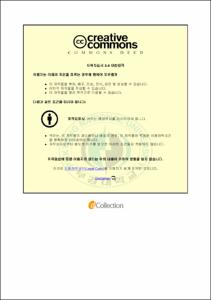중국인 한국어 학습자를 위한 양태부사 "아마'와 '혹시' 연구
- Abstract
- The reason I decided to study on this subject is that I found out ‘A-MA’ and ‘HOKSI’make foreign students confused because they recognized both words have the same meaning reffering to a guess. People before me have found out the reasons for this problem which are the complex of korean, an influence on chinese and the inappropriate curriculum.
I have tried to teach chinese students korean more efficiently with this study by working on the reason for this problem.
I showed the object for this study, a need for this job and how I did this mission in the first section. I did the difference and the similarity between ‘A-MA’ and ‘HOKSI’ by studying the meaning and grammar of those two words in the second section.
I present the difference and similarity between korean adverb of manner and chinese adverb of manner in the third section. I analyzed TV scripts and spoken corpus to find out how korean people use ‘A-MA’ and ‘HOKSI’ in their practical life in the fourth section. In fifth section, I tried to find out how korean text books say ‘A-MA’ and ‘HOKSI’.
Finally, I explained the conclusion of this study, like what I found out and advice for foreign students on this subject in the sixth section.
These are what I found out. First, not only ‘A-MA’ and ‘HOKSI’ have something in common in terms of referring to a guess but also have a difference that ‘A-MA’ is more surer than ‘HOKSI’ is. Also they are difficult to be with various words. So I realized it will be a problem if korean teachers continue to teach those two words as just synonym and tell them just the meaning of them instead of adding the grammar.
Second, korean adverb of manner and chinese adverb of manner have something in common that show psycological things but chinese adverb of manner can be used with more words than korean adverb of manner can.
Korean adverb of manner must be with the ending for a guess but chinese adverb of manner can make the complete sentense on its own without any limitation. So I predicted that chinese students would get in troble with the use for guessing if they didn't learn that those two words have some limitation grammatically.
Finally, some korean text books say just meaning of those two words, not various expressions connected to them, And the practical expressions are not as much as the ones that korean people actually use in their real life, I guess that chinese students wouldn’t get the right information.
I think the students will learn korean words efficiently and the problem will go away if we show the right meaning and the limitation in grammar for those two words in korean text books.
*Key words: Korean education, adverb of manner, chinese korean learners.
- Issued Date
- 2015
- Awarded Date
- 2015. 2
- Type
- Dissertation
- Publisher
- 부경대학교 교육대학원
- Alternative Author(s)
- MOON HYE JEONG
- Affiliation
- 부경대학교 교육대학원 외국어로서의 한국어교육전공
- Department
- 교육대학원 외국어로서의한국어교육
- Advisor
- 권성미
- Table Of Contents
- Ⅰ. 서 론 1
1. 연구 목적 1
2. 선행 연구 검토 및 연구의 필요성 3
3. 양태부사의 개념 및 범주 7
4. 연구 질문 및 연구 방법 10
가. 연구 대상 10
나. 연구 질문 및 방법 13
Ⅱ. 한국어와 중국어의 양태부사 17
1. ‘아마’와 ‘혹시’의 대비 17
가. 의미 17
나. 통사 22
2. ‘아마’·'혹시'와 '也许'· '难道'· '恐怕'· '莫非'· '大概'의 대비 26
가. 의미 26
나. 통사 29
Ⅲ. 한국인의 ‘아마’와 ‘혹시’의 사용 양상 33
1. TV 드라마에서의 사용 양상 33
가. 분석 대상 33
나. 분석 방법 34
다. 분석 결과 35
2. 말뭉치 자료에서의 사용 양상 44
가. 분석 대상 44
나. 분석 방법 45
다. 분석 결과 45
Ⅳ. 한국어 교재의 ‘아마’와 ‘혹시’의 제시 양상 48
1. 분석 대상 및 방법 48
2. 분석 결과 49
가. 고려대학교 교재 49
나. 서울대학교 교재 52
다. 연세대학교 교재 55
Ⅴ. 결론 61
1. 결론 61
2. 발견점 64
3. 교육학적 제언 66
가. 제시 순서 및 제시 단계 67
나. 의미 70
다. 통사 78
*참고문헌 81
- Degree
- Master
- Appears in Collections:
- 교육대학원 > 외국어로서의 한국어교육전공
- Files in This Item:
-
-
Download
 중국인 한국어 학습자를 위한 양태부사 "아마'와 '혹시' 연구.pdf
기타 데이터 / 1.39 MB / Adobe PDF
중국인 한국어 학습자를 위한 양태부사 "아마'와 '혹시' 연구.pdf
기타 데이터 / 1.39 MB / Adobe PDF
-
Items in Repository are protected by copyright, with all rights reserved, unless otherwise indicated.